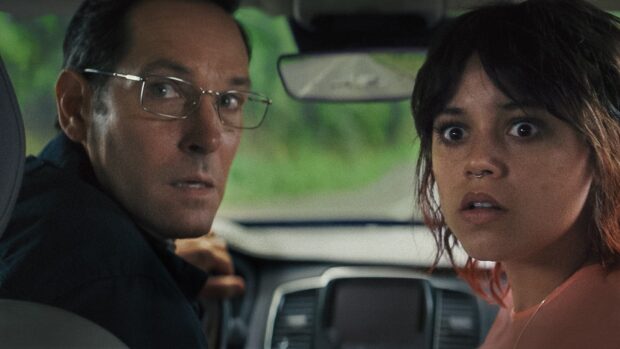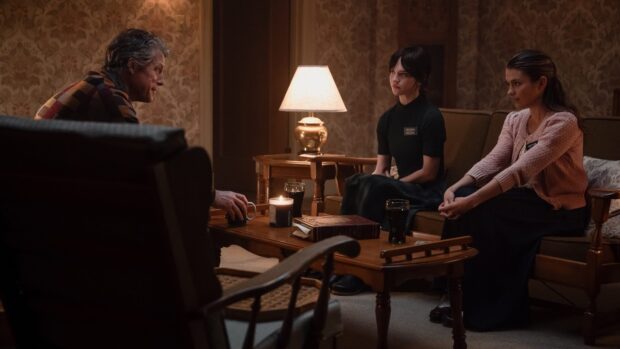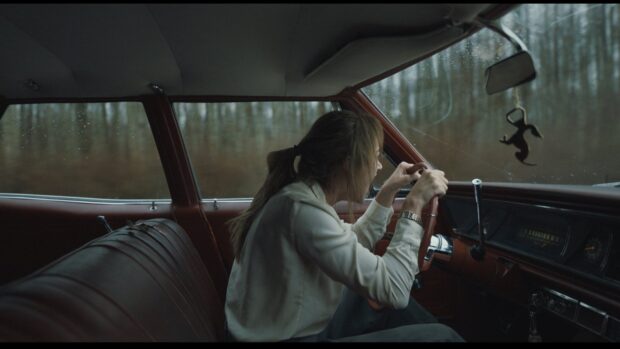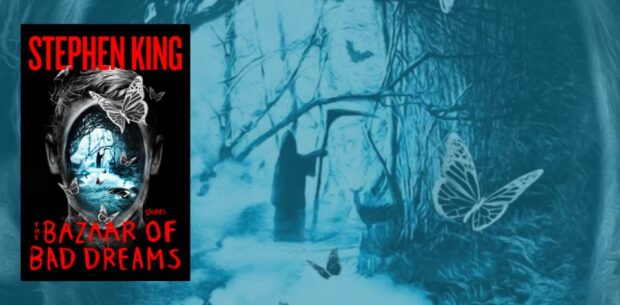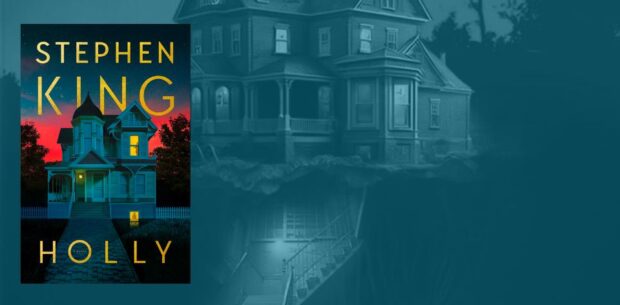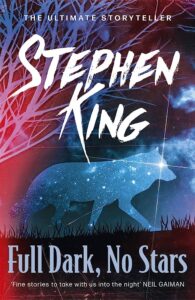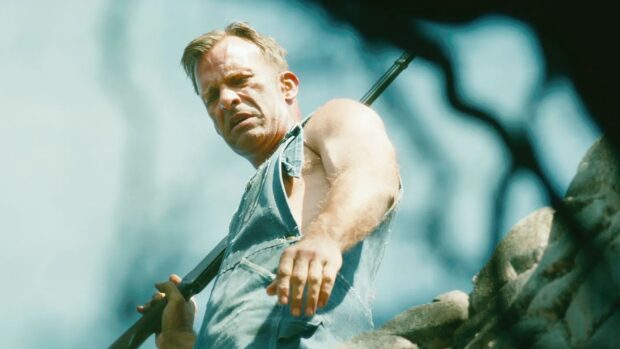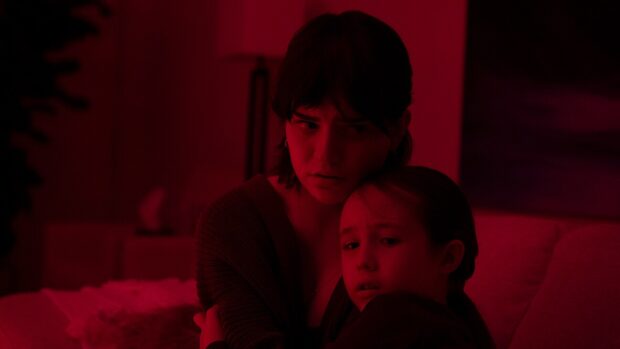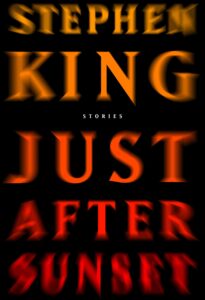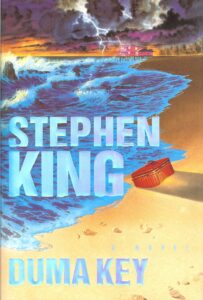For the better part of the last fifty years, Stephen King has maintained his dominance over horror and popular literature — and 2025 shows no signs of slowing.
With both fresh books and more screen adaptations on the horizon, King continues to thrive as both an author and a source of seemingly endless cinematic inspiration. As we’ve explored in our Inconstant Reader column, his dual legacy on page and screen has earned him legions of fans across generations.
With 2025 well under way — and at least one King adaptation already out in the wild — here’s a breakdown of what to expect in print, on screen, and beyond.
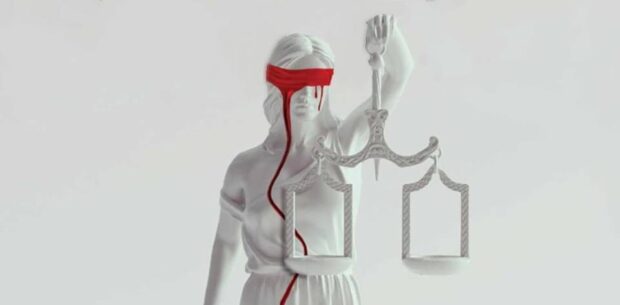
📚Books
Never Flinch
As we learned from the Bill Hodges Trilogy, King is just as punchy in crime fiction as he is in horror. Never Flinch continues that thread, following Mr. Mercedes, Finders Keepers, End of Watch, The Outsider, If It Bleeds, and Holly by once again returning to Holly Gibney. Reportedly inspired by the Lady Gaga dognapping case, this instalment follows a celebrity activist pursued by a stalker. This one’s perched firmly atop this Constant Reader’s pile.
🗓️Release date: 27 May 2025
Hansel and Gretel
One of the year’s more surprising entries, this children’s picture book sees King collaborating with The Maurice Sendak Foundation to reimagine a classic fairytale. Sendak’s connection dates back to 1997, when he designed sets and costumes for Humperdinck’s opera version. It’s not King’s first venture into children’s literature either. See: Charlie the Choo-Choo, a Dark Tower tie-in by “Beryl Evans.”
🗓️WHEN: 5 September 2025

🎬Films
The Monkey
Already released earlier this year, director Osgood Perkins expands King’s macabre 1980 short story (later collected in Skeleton Crew) — about a cursed cymbal-banging toy monkey — into an unhinged, darkly funny ride. Blending absurdity with gore, it’s a bloody good time. (You can read our full review here on The Reel Bits).
🗓️Release date: Out now.
The Life of Chuck
Yes, it won the People’s Choice Award at TIFF last year — but let’s be honest, the real buzz comes from Mike Flanagan (Gerald’s Game, Doctor Sleep) adapting King once again. Based on the 2020 novella from If It Bleeds, this story unfolds in reverse, chronicling a life from death to birth. Tom Hiddleston stars in the title role.
🗓️Release date: 6 June 2025 (USA), 21 August 2025 (Australia – following debut at Sydney Film Festival in June)
The Long Walk
The first of two 2025 adaptations from King’s Richard Bachman works, this one is set in a dystopian America ruled by a brutal dictator (cough). One hundred teenage contestants are forced into a walking contest where the last one standing is declared the winner. Already the inspiration for Sweden’s real-life Fotrally (running since 2009), The Long Walk finally makes it to screen via director Francis Lawrence (The Hunger Games, Red Sparrow), after prior attempts by George A. Romero and Frank Darabont.
🗓️Release date: 11 September 2025 (Australia), 12 September 2025 (USA)
The Running Man
From walking to running: the second Bachman adaptation is arguably the most high-profile. Edgar Wright takes the reins on a new version of this 1982 dystopian novel, famously adapted in 1987 with Arnold Schwarzenegger. This time around, Glen Powell stars as the hunted contestant in a deadly game show.
🗓️Release date: 6 November 2025 (Australia), 7 November 2025 (USA)
BONUS: Black Phone 2
Okay, not King — but close. This sequel to The Black Phone comes from Joe Hill, King’s son, with an original script based on Hill’s pitch. Scott Derrickson returns to direct, along with co-writer C. Robert Cargill. The first film cemented Derrickson as a genre master, so we’re keen to see where they go next.
🗓️Release date: 16 October 2025 (US), 17 October 2025 (US)

📺TV
The Institute
Based on King’s 2019 novel, The Institute follows children with psychic abilities being held in a sinister facility. This limited series comes with serious TV pedigree: David E. Kelley (Big Little Lies, Boston Legal) handles the script, with Jack Bender (Lost, Game of Thrones) directing. Ben Barnes and Mary-Louise Parker lead the cast.
🗓️Streaming: On MGM+ sometime in late 2025.
🔮What’s next?
Talisman 3
A project so secretive it doesn’t even have a title yet. King has confirmed he’s “beavering away” on a third entry in the saga that began with The Talisman and Black House, co-written with the late Peter Straub. King says he’s “channeling” Straub and basing the story on ideas they discussed before Straub’s death. No release date yet — and 2025 might be a stretch — but never say never.
Want more Stephen King? Inconstant Reader is the feature column that explores Stephen King’s books in the order they were published — sort of!


